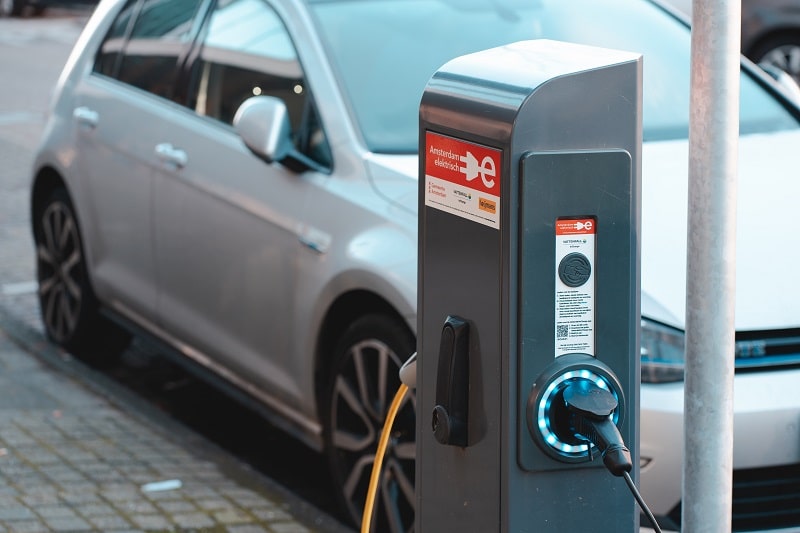Future of Electric Cars: Charging Problems and Solutions
After a decade of strong expansion, the worldwide electric car stock reached ten million units in 2020, a 43 percent increase over 2019 and 1% of the total fleet. In 2020, two-thirds of new electric car registrations and two-thirds of the stock were battery electric vehicles (BEVs). China had the largest fleet, with 4.5 million electric vehicles, while Europe had the highest yearly rise, reaching 3.2 million in 2020. While the economic effect of COVID-19 has hampered the market for gasoline and diesel automobiles, demand for EVs continues to rise. Climate change and aspirations to achieve net-zero emissions are driving the global move to emissions-free transportation.
With 63 percent of consumers assuming that an EV is out of their budget, capital costs have always been a big issue in EV purchasing decisions. With battery costs declining and cost parity between EVs and ICE cars expected by 2026, attention is turning to the problem of scaling the necessary infrastructure and raw material supply to enable mainstream adoption of EVs. Charging stations are more difficult to come by than typical gas stations, due to high investment costs and challenging infrastructure construction. Charging stations are an expensive investment due to installation costs, which range from $2,500 for a slower charger to $35,800 for a fast charger, and other expenditures such as licenses and regulations. Furthermore, allowing individuals to charge where they normally park, whether at home or work, comes with its own set of issues, including dealing with multi-tenant buildings, grid-connection management, and charging slot availability. As a result, there is a smaller network of operational charging stations, which has hindered consumers from switching to electric vehicles.
Technology will play a key role in allowing charging and grid infrastructure, as well as ensuring a stable supply of crucial minerals to support the mass adoption of electric vehicles at a reasonable cost. Cars are often idle for 95% of the time. During times of high demand, smart and flexible charging technology harnesses unused power from car batteries to deliver more electricity to the grid, or just intelligently stops or decreases charging power. The charging system can better predict abrupt peaks in electricity consumption by allowing EV owners to plan to charge based on power limits, price, and priority, as well as sell unused power back to the grid. Additionally, the technology allows the grid to expand capacity, service rising demand from electric vehicles at a reduced cost to customers, alleviate grid system stress, and avoid energy price spikes.

The transition to electric vehicles is well underway, fueled by rising environmental concerns, government legislation, and financial incentives, and the challenges that this shift presents are only growing. Fortunately, AIoT-assisted technology, when combined with other hardware, industrial, and supply chain solutions, allows us to overcome numerous obstacles. Smart charging technology enhances the charging infrastructure as well as the consumer experience. Smart energy management enhances electric vehicle and stationary load management, minimizing the danger of grid overload and allowing for more renewable energy use. By prolonging the lifespan and reusability of batteries, monitoring, analytics, and recycling help to alleviate supply bottlenecks caused by increased demand for the necessary battery materials.
More countries will follow Germany and other countries in prohibiting the sale of combustion engine cars as a result of the worldwide push to decrease emissions combined with technologies that accelerate the electrification of transportation. Given that the prohibition might go into effect as early as 2030, the question is whether businesses, districts, and cities are prepared to make the move in this decade.
By 2025, there will be even more electric vehicles with a range of at least 250 miles. However, their number will still be smaller than the 400-mile range given by conventional automobiles, and gas stations remain more accessible than charging facilities for electric vehicles. In most markets, charging infrastructure is immature, costly, difficult to operate, and geographically constrained. Owners of fleets that coordinate charging en masse must pay for costly grid improvements and endure lengthy charging outages. Standard plug-in charging has a few drawbacks that emerging methods are aiming to address.

Battery changing is one option, however, it has proven difficult to implement. Better Place, a start-up that created a network of exchanging stations in Israel before expanding globally, went out of business in 2012. Elon Musk also attempted but failed, to start a battery-changing business. However, China's NIO has done 800,000 battery swaps and advanced the technique. The concept is also being tried in the United States; Ample, based in the Bay Area, was founded to provide a battery swap system to automakers and EV operators. With the China State Grid piloting semi-manual bus and taxi battery swaps, battery swaps for trucking and long-haul look promising as well. Over the last decade, battery technology has advanced considerably, lowering costs by 90% and reducing weight, allowing for improved performance and range. However, battery shifting necessitates extra resources, raising concerns about resource capacity and sustainability.
Another alternative is to include charging technologies in road networks. At Electreon, for example, they have pioneered wireless charging technology for electric vehicles in motion, dubbed the Electric Road System. EVs equipped with Electreon batteries may travel over a charging strip embedded in the road and recharge their batteries as needed. The charging is provided by the grid, and solar fences may be placed along the electric route to provide renewable energy.
Humanity will not be able to achieve universal EV adoption with a single policy; we will need a coordinated effort and aggressive implementation of current alternatives. The ability of electric vehicle range solutions to achieve economic scale is heavily reliant on worldwide standards and public-private partnerships. The technology is here, but whether we are ready to embrace it remains to be seen.
